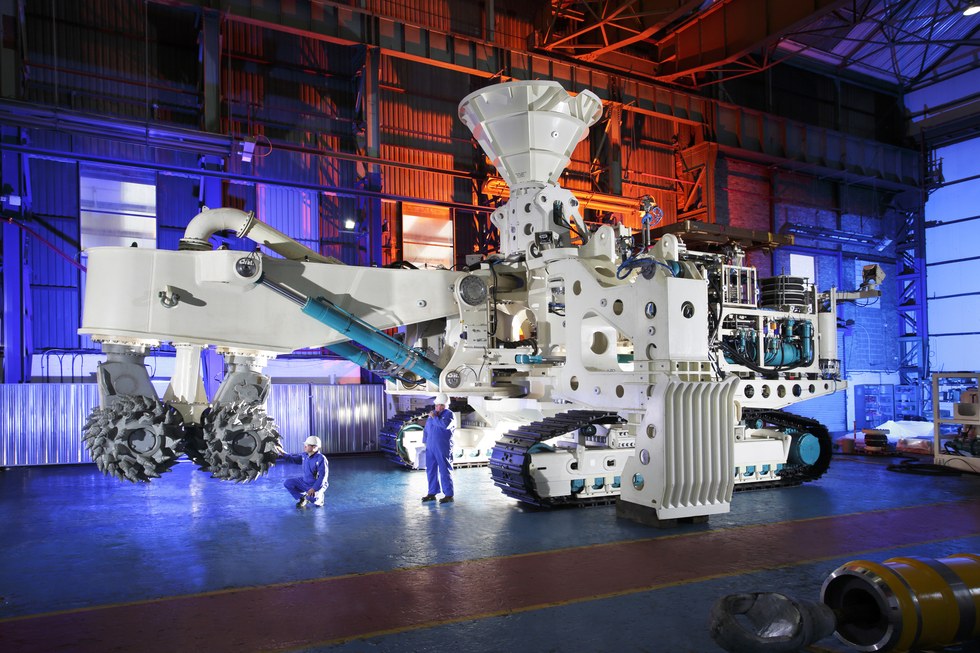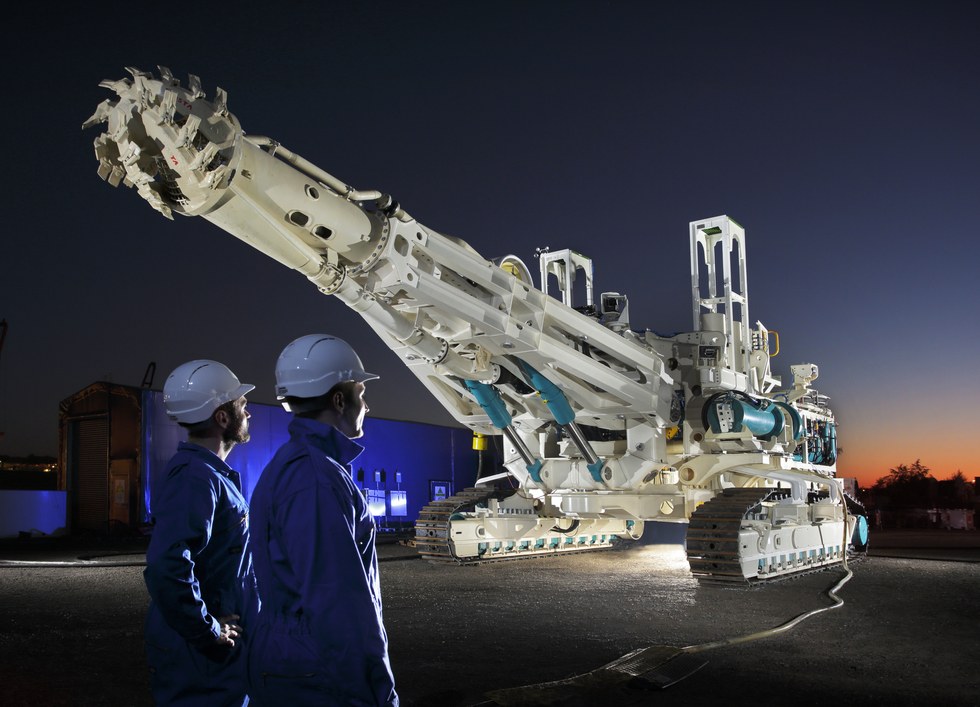World's First Deep-Sea Mining Venture Set to Launch in 2019

The world's first deep-sea mining operation will kick off in early 2019 when a Canadian firm, Nautilus Minerals Inc., lowers a trio of massive remote-controlled mining robots to the floor of the Bismarck Sea off the coast of Papua New Guinea in pursuit of rich copper and gold reserves.
The machines, each the size of a small house, are equipped with rock-crushing teeth resembling the large incisors of a dinosaur. The robots will lumber across the ocean floor on mammoth treads, grinding and chewing the encrusted seabed, sending plumes of sediment into the surrounding waters and killing marine life that gets in their way. The smallest of the robots weighs 200 tons.
"A lot of people don't realize that there are more mineral resources on the seafloor than on land," said Michael Johnston, CEO of Nautilus, by phone from the company's field office in Brisbane, Australia. "Technology has allowed us to go there."
If Nautilus succeeds, an undersea gold rush could be at hand.
Over two-dozen contracts have already been granted to explore hundreds of thousands of square miles of ocean floor by a United Nations body called the International Seabed Authority (ISA), which regulates areas of the seafloor that lie outside of any national jurisdiction.
"In the seabed, resources are incredibly rich," said Michael Lodge, Secretary-General of the ISA. "These are virgin resources. They're extremely high-grade. And they are super-abundant."


Analysts warn that population growth and a transition to low-carbon economies will test global supply constraints for minerals. Indeed, current levels of mining exploration are not keeping pace with future demand, according to a peer-reviewed paper published in March by a team of researchers led by the University of Delaware's Saleem Ali.
Get the world’s most fascinating discoveries delivered straight to your inbox.
The prospect of mineral demand outstripping supply has led an increasing number of firms to consider operations at the bottom of the ocean, where reserves of copper, nickel, and cobalt are thought to be plentiful, along with lesser amounts of gold and platinum.
"It's no exaggeration to say that there are thousands of years' supply of minerals in the seabed," Secretary-General Lodge said. "There is just absolutely no shortage."
Nautilus says early tests show their Bismark Sea site, called Solwara-1, is over 10-times as rich in copper as comparable land-based mines, with a copper grade above 7 percent versus an average 0.6 percent grade on land. The site also boasts over 20 grams per ton of gold, versus an average grade of 6 grams per ton on land.
Many of the world's best options for surface mining have long since been explored and developed, according to Thomas Graedel, an industrial ecologist at Yale University.
"The planet has been extensively explored on land," he said by phone from New Haven. "I think industry will continue to want to explore for new potential deposits of minerals."
Indeed, mining the ocean floor has been under consideration for decades, but seen as a remote possibility.
In one famous case in 1974, the CIA used a fake ocean floor mining expedition, ostensibly backed by the eccentric billionaire Howard Hughes, as cover for an attempt to hoist a sunken Soviet submarine off the coast of Hawaii.
RELATED: 'Casper' Octopus Could Be Threatened by Deep-Sea Mining
But now, the practice is shifting from fantasy to reality — a fact that is causing alarm among environmental groups who argue that not enough research has been done to prove seabed mining is ecologically sound.
"There are too many unknowns for this industry to go ahead," said Natalie Lowrey of the Australia-based Deep Sea Mining Campaign, which is calling for the practice to be banned. "We've already desecrated a lot of our lands. We don't need to be doing that in the deep sea."
Lowrey worries that the plume of seafloor sediment stirred up by the mining robots could travel with sea currents, disturbing ocean ecosystems. Sediment clouds could prove harmful to filter-feeders, environmentalists argue, undercutting the lower rungs of the food chain and potentially causing knock-on effects for other creatures.
"There's a serious concern that the toxicity from disturbing the deep sea can move up the food chain to the local communities," who live along the coast of Papua New Guinea, she said.
Johnston of Nautilus said his company is taking the sediment plume issue seriously, and that the company's machines are designed to minimize the undersea cloud through the collection procedure itself.
"When we're cutting, we have suction turned on," he said. "It's not like we're blowing stuff all over the place. We're actually sucking it up. So the plume gets minimized through the mining process."
Johnston added, "We go to great efforts to minimize the impact of the plumes. We're quite confident that the impact from these activities will be significantly less than some of these people claim."
RELATED: Seawater Could Provide an 'Endless' Source of Uranium for Nuclear Plants
At Solwara-1, Nautilus is going after a type of deposit known as Seafloor Massive Sulfides (SMS), which form next to subsea hydrothermal vents at the margins of tectonic plates.
The deposits, which include copper, gold, and potentially other valuable minerals, collect after cold water seeps into the earth and becomes geothermally heated, dissolving metals and sulfides from the surrounding rocks before being spewed back out of the vent at temperatures up to 400 degrees Celsius and collecting on the sea floor — along with the minerals brought up from below.
The mining robots have been designed to operate in near-freezing temperatures, under pressure 150 times greater than at sea level.
The first robot, the auxiliary cutter, carves a level path to make way for the second machine, the bulk cutter, which is equipped with a wide, powerful cutting drum.
The third robot, called the collecting machine, follows behind them, slurping up the seawater slurry with a consistency like wet cement through internal pumps before sending the material to the ship at the surface via a riser system.
On the ship, the water is filtered, and solids larger than eight microns are removed, before being returned back into the ocean. The cargo is then transferred to a transport vessel and sent directly to customers in China.
Now, as Nautilus prepares for its maiden voyage, many will be watching from the sidelines — and if it succeeds, imitators will likely try to follow.
"If Nautilus goes ahead, it's going to open the gateway for this industry," Lowrey said.
WATCH: How Did The Deepest Part Of The Ocean Get So Polluted?
Originally published on Seeker.
